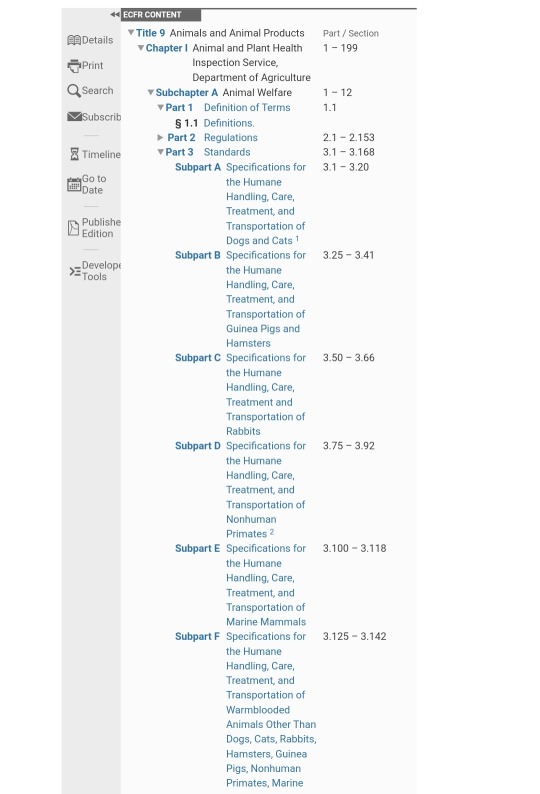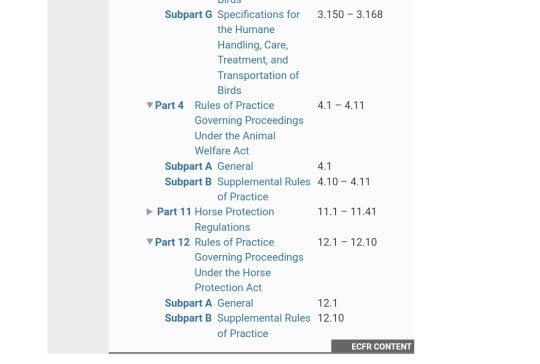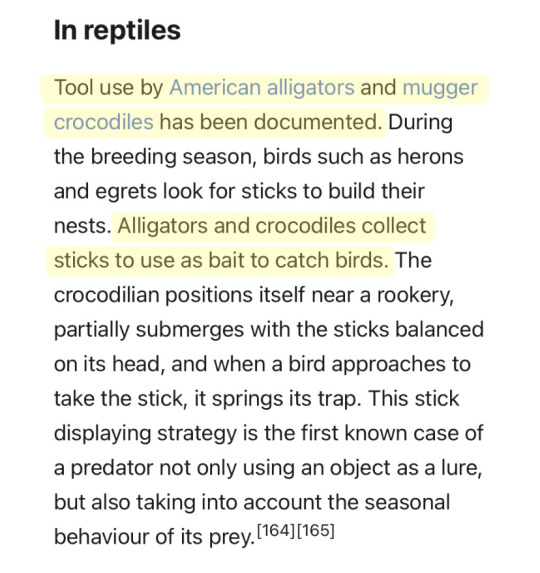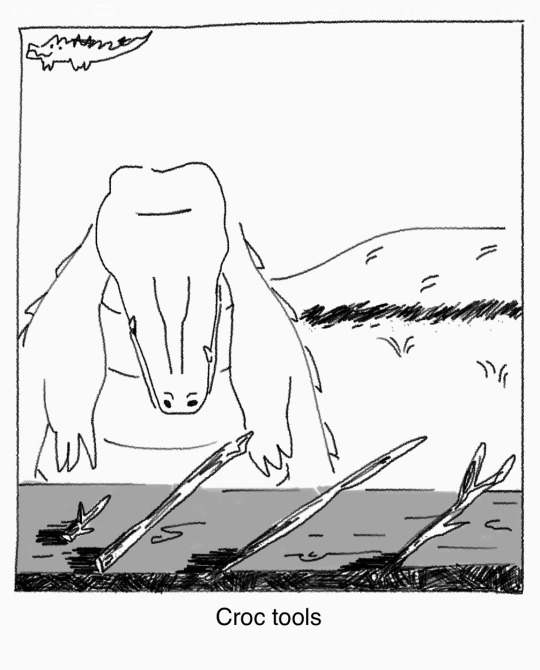#animal research
Text

Parrots learn to make video calls to chat with other parrots, then develop friendships with each other
Researchers from Northeastern University, in conjunction with scientists from MIT and the University of Glasgow, conducted a study exploring the impact of teaching a group of domesticated birds to communicate using tablets and smartphones. The findings indicate that utilizing video calls may assist parrots in mimicking the communication patterns observed in wild birds, potentially enhancing their behavior and overall well-being in the homes of their owners.
via smithsonianmag.com
#parrot#mit#northeastern university#university of glasgow#study#animals#technology#video call#wild birds#TechForPets#Animal research#animal behavior
2K notes
·
View notes
Text
(these are going to be used for [redacted] and are not proportional, but cumulative. please vote accordingly. thank you)
#snakes#tumblr polls#animal research#snakeblr#snakes of tumblr#please make me a very dangerous snake that i can use to defeat my nemesis that i may also have a gay crush on thanks
379 notes
·
View notes
Text
So the thing I didn't mention in that poll I published yesterday is that the motor initiation piece that is, at the time of this writing, absolutely sweeping the poll as the Worst Thing people struggle with?
It's the specific thing I'm trying to pull together a grant for, perhaps unsurprisingly. But it's also the only one that actually isn't classically conceptualized as executive function. (I know, I know, that feels stupid to me, too.)
See, formally speaking, we describe executive function in terms of higher-order cognitive processes that allow us to complete complex tasks. There is a lot of work on, for example, "set shifting" (which is a particular paradigm for studying the ability to transition between different frames of mind, essentially; it's measuring cognitive flexibility) and on action inhibition / impulse control. (One of my colleagues works on set shifting, in fact, and I might actually take a look at that later.) We also have a lot of work on how individuals make decisions and prioritize conflicting needs.
But the transition between motivation and motion is a lot harder to study, and it doesn't fit so neatly into this top down paradigm, either. Most of the people who study this kind of movement initiation are people who aren't really focused on executive function per se at all. They're mostly people who work on Parkinson's, in fact.
The problem is that the best way to untangle how these systems work is to break specific things and see what impact that has on the overall function, and that means working with animal models. You know what we can't study as easily with animal models? Wanting to move and not being able to initiate self-paced motion—that is, we can't get inside an animal's head to understand what it wants to do in the absence of a moving body to indicate that thing. This is part of why many of our best studied kinds of executive dysfunction involve not doing a thing, rather than doing it: that way you can look at error rates and study a measurable change in behavior.
There are things we can do, though. For example, you can disentangle motivation versus pleasure in a rat that enjoys things but has no motivation to make them happen by asking questions like: I know that rats like water with sugar in it. If I set up a device that squirts a trickle of sugar water into the mouth of the rat, does it close its mouth? What facial expressions does it make? If I put bitrex in the water instead of sugar, does the reaction change? (Yes, emphatically.)
The thing is, motivation is regulated by dopamine... and so is movement. There's good reason to think that neurodevelopmental disorders like ADHD and autism are mediated by weird dopamine signaling patterns, and we certainly know that there is a direct relationship between abnormally high dopamine signaling and schizophrenia symptoms... and that abnormally low dopamine will give you Parkinsonian tremors.
Most stimulant meds for ADHD work by upregulating dopamine signaling, too. All of them are associated with increased locomotor activity, among other things. We know that dopaminergic signaling precedes actions in the body, too: you get firing before the actual motion happens.
Somewhere there is a threshold of motion initiation that is getting fuckily disconnected. I have some thoughts about where it is, but I definitely need to run some experiments to check my hypotheses against evidence.
#Executive function#Neurodivergence#autism#I have got to make myself some canonical tasks here#Tags not tasks#Animal research#Day job#Neuroscience
67 notes
·
View notes
Text
I started reading the book 'Pests' by Bethany Brookshire. I thought it would be a book filled with information on how to protect your garden without causing any harm to animals. I could not have been more wrong, but soon it didn't matter, because I was drawn in immediately. This book is written by a brilliant scientist, who presents to you, the history, the data, the results and the cultural context of pests all around the world. It starts with squirrels, but then goes on to talk about pythons, pigeons, cats, rats, mice, frogs, coyotes, wolves, elephants, dogs, raccoons, deer, bears – and how they've been seen as a pest, most often for no fault of their own.
I learned about the numerous ways people in the past have created a 'pest' problem for themselves, and how they went on resolving it, and honestly I was shocked at the most of it. I did not know that human scientists developed specific plagues for animals in order to get rid of them. I also had no idea how quickly humans turned the perception of a certain animal from 'useful' to 'pest', without even realizing they're responsible for the behaviour of the animal in the first place. Also the number of times humans have attempted to introduce a predator in order to get rid of an invasive species – only to immediately cause a new invasive species, absolutely incredible.
I was surprised to find out that some specific animals could be pests at all, for example, elephants. Absorbing the information presented to me thus far, I thought elephants were nothing short of wonderful and welcome in anyone's life – but, the story describes them eating the entire fields worth of grain, in only one night. And due to their size, they're unstoppable. They've destroyed houses, and even killed people, as a result of trying to get to the food. The elephants are a protected species, so the locals have been forced to develop different way of co-existing, namely, to stop growing grain and try to find different ways of survival and sustenance. There have been numerous other attempts to protect the fields from them, but how would you protect anything from an elephant? The only thing they're scared of, are bees. And if there's food to be gained, they'll overcome the fear of the bees too.
Did you know that if mice multiply too much, they'll have a mice plague that will wipe them out, without human interference? Mice and rats are described as the animals closest to us – because they live where we live, eat what we eat, and learn whatever it takes to find their way in the land of humans. And it seems, we have the same problems as well.
One of my favourite little piece of knowledge in this book: the scientists studying the snakes in a lab name the snakes after Slytherins – so they have Snape, Draco, Crabbe, Goyle, and Bellatrix. It was amazing to listen about Snape the snake.
The author of this book is incredibly unbiased, and shows her love for every animal mentioned, but also understanding and compassion for people who have felt wronged, violated, helpless and cornered by the animal, and how awful it feels to not be able to protect their homes and livelihoods from an animal invading their territory. In author's mind, the animals are not at fault, because all they've been trying to do is survive, get to the source of food, for them this is foraging. For us, it's nature taking from us what we intended for ourselves.
The problem of seeing animals as pests, comes often from the perception of us being the dominating species, and having the right to remove or introduce or change animals, by how convenient and pleasing we find them. She sourced the problems from negative experiences, loss, violation and danger, but also from culture, colonialism, religion, behaviours of the people around us. Most children have no concept of danger or pests – babies in a study would reach out curiously seeing a picture of snake. Perception of which animal is good and which one is bad, comes with culture, experience and the behaviour of everyone else around it. And our collective perception comes from whether the animal is rare, whether it lives close to us, if we have to adjust our lives because of it or not, if we have had negative experiences or not, whether it can hurt us, whether we have something the animal wants (food) and tries to get from us.
I recommend this book to anyone who'd like to know more about the history of humans trying to live alongside – or refusing to live alongside certain animals. And anyone dealing with any kind of pest, or just not understanding why animals act the way they do around humans.
I come out from reading this, feeling no more wise on how to keep the pests out – except for, don't leave the food outside the house where animals can get to it, that's the #1 reason for most scenarios – but feeling way more understanding and at ease about animals that are perceived as pests. I know solutions that have been tried to deal with them, I know what didn't work, and I know how badly some collective solutions can become. I understand we need to find a way to live with them as our neighbours, not enemies, not violators of our property. And most often, just being responsible about where you leave your food, how much animals you tempt to come close to you, how you reward them for interacting with you, is more than a half of the solution.
#pests#bethany brookshire#sustainable culture#living alongside animals#coexisting with animals#environmentalism#animal science#animal research#ways scientists and people have dealt with animals in the past#educational#resources#pssst if you want to listen to the audiobook i can send it to you#i love the audio version
243 notes
·
View notes
Note
What is your opinion on capturing animals for educational purposes and then setting them free? (Like using a moth trap to study them and set them free afterwards)
I’m not sure if you mean educational purposes or research purposes so I’ll cover both. I think the intention is just to educate someone then that can be done with footage and text, you don’t need to capture a live animal for that.
As for actual research, I think it depends on what is being studied and why. If the research is to benefit the animal and the risk of harm/stress is reduced as much as possible, then I’d argue it’s justified on that basis. We do need to know about animals to be able to help them, but disruption should be kept to an absolute minimum wherever possible.
However, I do think that often researchers don’t even seem to ask themselves these sorts of questions when it comes to invertebrates in particular, and are far too willing to interfere with the lives of wild animals for very little reason. There is a culture of believing that the ends justify the means, even in cases where very little is achieved and the animal endures real harm.
19 notes
·
View notes
Note
I am working on a short story I'd like to take place in an institutional (like, government or educational facility linked) lab working with at least a few different kinds of invasive species. Are there labs like this? What would I look for to find out more? Do you know where can I find more information about working with animals in labs in a contemporary institutional setting? I'd like it to be as accurate as possible.
assuming you don't mean invertebrates, most labs aren't working with animal species that are native to where the lab is, or at least not working with a completely unaltered wild type, but they don't usually work with a bunch of different species (maybe like, Mice AND one or two others MAYBE, and it would be different people in the lab not one person that different species for the same research), and they usually don't house the animals in the actual lab space. An institute, esp a government one, would likely have a husbandry team and a dedicated vivarium where the animals would be kept and cared for by competent technicians. Labs that work with native species would be like... conservation agencies, fisheries and wildlife, DNR maybe, idk. But it's far more likely to involve field work if the species are native, rather than lab work.
If you have specific questions, you can feel free to come ask. Otherwise you can try contacting, for instance, a dean of research at whatever university is nearest to you, and asking if there's a way you can speak to someone involved in animal husbandry/animal research, and explain why. They might even be able to set up to let you see parts of the vivarium and/or a lab space in person, though you might be hard-pressed to convince them you're not a rights activist seeking to do harm. Universities that take federal funding have a lot of public records that anyone can request to see at any time. I've never had to do it so I don't know how to go about requesting it, but I'm sure you could figure it out with some calling around, if it's important.
The NIH also makes the Guide for the Care and Use of Laboratory Animals available free online. I don't know how useful that will be, but it has all the care and housing standards for species used in research, including building specs and vet care and all. It can tell you how things are SUPPOSED to be.
25 notes
·
View notes
Photo

(via Dr. Oz’s Scientific Experiments Killed Over 300 Dogs, Entire Litter of Puppies)
Columbia's internal investigation found that Oz's research team inflicted extensive suffering on canine test subjects in violation of the Animal Welfare Act.
a review of 75 studies published by Mehmet Oz between 1989 and 2010 reveals the Republican Senate candidate’s research killed over 300 dogs and inflicted significant suffering on them and the other animals used in experiments.
what a horrible creepy fuck this guy is
#animal research#dr. oz#inflicted extensive suffering#canine subjects#etcetc#politics#human behavior#horrible people in the GOP
61 notes
·
View notes
Text

when a Microsoft Manual of Style heading offers you joke setup, you take it
#ms manual of style#Microsoft#software engineering#animal research#technical writing#snowswords#gotta tag#horsesrcool22#cosmic#joey#almostalmost
27 notes
·
View notes
Text
Interesting case of barbering was found in one of our mice. One of her cage mates decided to give her the full friar tuck hair cut

10 notes
·
View notes
Note
Quick question re animal research, I hope that’s okay. I remember reading about how there’s only one law that protects lab animals in the US (animal welfare act iirc), and that it doesn’t apply to something like 90% of them since it excludes rodents, mice, and birds. But I think I read that a long time ago, and on your post people were talking about all the laws that protect lab animals so I was just wondering, are there more laws now? Or are they talking about on an institutional level? How could the govt be investigating if that’s the case? Thanks for answering if you do, and I definitely understand if you don’t because that post blew up, lol.
No worries, thanks for reaching out: the AWA does have regulations that cover every type of animal, as there is a section specifically for animals not already mentioned.


[Images show links to regulations for dogs and cats, guinea pigs and hamsters, rabbits, nonhuman primates, marine mammals, birds, plus a section for anything warm blooded that is not covered in those previous categories.]
A lot of the additional regulations I'm aware of are at the institutional and funding level. Like if you want to get a grant from the NIH for animal research, you have to complete a metric ton of additional paperwork, and you need to have absolutely pristine records of everything that happens to those animals in your lab.
As far as I'm aware, Neuralink sidestepped the latter type of oversight likely because they were able to secure funding from private sources/Elon Musk's own bank account (I have HUGE issues with private philanthropy funding the sciences, I've ranted about this in the past). So the only people who are able to come after him are the feds for violations of the AWA.
If anyone has more in-depth knowledge about either situation though, feel free to pitch in.
6 notes
·
View notes
Quote
More and more scientists are realizing that animals, like people, are individuals: They have distinct tendencies, habits, and life experiences that may affect how they perform in an experiment. That means, some researchers argue, that much published research on animal behavior may be biased. Studies claiming to show something about a species as a whole—the distance that green sea turtles migrate, for example, or how chaffinches respond to the song of a rival—may say more about individual animals that were captured or housed in a certain way, or that share certain genetic features. That’s a problem for researchers who seek to understand how animals sense their environments, gain new knowledge, and live their lives.
In 2020, Rutz and his colleague Michael Webster, also at the University of St. Andrews, proposed a way to address this problem. They called it STRANGE. They proposed that their fellow behavior researchers consider several factors about their study animals: social background, trappability and self-selection, rearing history, acclimation and habituation, natural changes in responsiveness, genetic makeup, and experience.
“A Cognitive Revolution in Animal Research” from The Atlantic
2 notes
·
View notes
Text
I’m reading articles on research animal enrichment and its effects on their welfare and came across a statement basically saying cattle that receive gentle interactions from humans show less avoidance and stress behaviors. And I know we need actual data on that sort of thing but like… no shit?? Yes?? Cow receives good petting from human and seeks more of that positive experience, wow, more news at 10.
A quick way to gain the trust of social grooming animals is by grooming them, especially those kept in situations where they can’t fulfill those grooming needs by themselves. Crazy thought, I know. From what I’ve seen, grooming seems to be sorely neglected in research settings, and I don’t entirely understand that. It’s a natural behavior (and technically a need!), and we know animals get stressed when they can’t engage in natural behaviors, so why would we not do what we can to either allow them to express those behaviors or alleviate those needs for them? I don’t understand how that’s apparently not a widely-shared sentiment among the research community, at least not to the extent that the people who pay for this shit see it as worth their time or money to address.
And these are mammals we’re talking about here, not some of the more ‘unrelatable’ species that I’d expect to face this issue with.
#sorry rant over#yes this is laced with sarcasm#I’m working on changing it here slowly but surely#i cannot stand to sit and watch a frustrated animal and have no way to fix it#i already bought a few toys with my own money#work#OP#animal welfare#animal research#animals#research#animal behavior
3 notes
·
View notes
Text


no fucking way
#sketches#comics#the far side#crocodiles#my art#i don’t know how to tag this.#also i should probably say. i tried to look into it further and i haven't seen hard hard evidence that they do this on purpose#personifying animals is tempting but ultimately i think it's just hot speculation atm. crocodilians are famously tough to research too#like the advantages may be a coincidence or just pure curiosity/play. which is also really cute...love those guys#sorry for the misinformation! light theory only afaik#comic
64K notes
·
View notes
Text

Goofy tyrannosaurid playing in the snow ☃️
#dinosaurs#path of titans#alioramus#Ronja the Panjuran (tm)#my research for this involved watching every single video on youtube of goofy animals playing in the snow it was a soul clensing experience
12K notes
·
View notes
Text
"aphobia doesn't exist"
bitch literally not that long ago an aroace youtuber animator was insulted by almost half of its community for being it
#i did some research about it and found out that the problem was principally that she had previous experience in the romantic area#so people just didn't take her seriously and said she was lying#even though she stated multiple times that she wasn't comfortable in those situations#now things are more calmed but damn#mind your own bussiness#i believe she knows more about herself than you#sorry if i offended you with this comment but i hate how aro/ace/aroace people are always left behind#insulted and rejected because they “dont know what they are talking about”#or because they “just have to wait for the right person”#or because they are “psychopaths and they are missing something”#i love that animator and she helped me realise a lot about myself#and now that i know the context i think i will start making a list and killing aphobes one by one#aromantic#arospec#asexual#aroace#acespec
9K notes
·
View notes
Text
Oh to be a lab rat, whose god is held accountable for minimizing their suffering.
1 note
·
View note